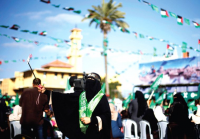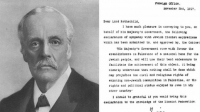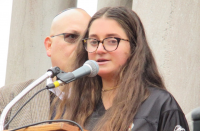
Links
Sheba Medical Centre
Melanie Phillips
Shariah Finance Watch
Australian Islamist Monitor - MultiFaith
West Australian Friends of Israel
Why Israel is at war
Lozowick Blog
NeoZionoid The NeoZionoiZeoN blog
Blank pages of the age
Silent Runnings
Jewish Issues watchdog
Discover more about Israel advocacy
Zionists the creation of Israel
Dissecting the Left
Paula says
Perspectives on Israel - Zionists
Zionism & Israel Information Center
Zionism educational seminars
Christian dhimmitude
Forum on Mideast
Israel Blog - documents terror war against Israelis
Zionism on the web
RECOMMENDED: newsback News discussion community
RSS Feed software from CarP
International law, Arab-Israeli conflict
Think-Israel
The Big Lies
Shmloozing with terrorists
IDF ON YOUTUBE
Israel's contributions to the world
MEMRI
Mark Durie Blog
The latest good news from Israel...new inventions, cures, advances.
support defenders of Israel
The Gaza War 2014
The 2014 Gaza Conflict Factual and Legal Aspects
To get maximum benefit from the ICJS website Register now. Select the topics which interest you.
Yom HaZikaron and Yom Haatzmaut, 5770
Despite some requests, I have generally felt self-conscious about distributing my written impressions of life here in Israel. Even after moving experiences last year on Yom HaZikaron and Yom Haatzmaut, I declined to share my feelings because I felt that they might have simply been influenced by the sheer novelty of the experience. Having now gone through these two astonishingly moving days for a second time, I feel almost a sense of obligation to share the impact that these days are capable of leaving upon an individual, as I hope that others may gain inspiration from it.
Having last year attended the lighting of the national torch and the accompanying ceremony at the Kotel, we chose to spend the evening of Yom HaZikaron this year at a ceremony held by the teens of Ezra (the religious youth group) in our neighborhood. As they lit a memorial torch and then candles for each of the many young men who preceded them in this organization and had gone on to give their lives in battle for the country (a few of them probably contemporaries of mine when I lived here in the 1970s and attended this Ezra branch), I was stricken by the number of families whom I have come to know who bear the burden of a loved one lost in battle. Yet, despite the sadness of the evening, I left with an overwhelming sense of inspiration from this amazing religious Zionist youth, who do such impressive things, who continue to populate the critical combat units of the IDF, and who, that evening, literally carried the torch that illuminated the path from memory to renewal.
The next morning I visited the military cemetery of Har Herzl. One can read history, tour the country and learn about important sites, but I do not believe that one can truly appreciate what it has taken to give us what we have today until one spends a few hours on Yom HaZikaron in a place such as this. Too many people, visitors and residents alike, walk this country savoring the freedom, independence and relative security that we have today without ever considering how that has been achieved. Yes, certainly through the benevolence of the Almighty. But there were individuals who gave life or limbs to wage the battles that the One Above oversaw. More than 22,000 of them sacrificed their lives during the modern course of our existence.
How often do we stop to think about who these people were? How old were they when they died? How, where and why did they die? To what extent did they suffer? To what extent do their families still suffer today from their loss? How many orphaned children did they leave behind? How many grieving widows, how many anguished parents?
A visit to Har Herzl on Yom HaZikaron begins to provide answers to these questions as one observes the full array of the People of Israel surrounding the tenderly landscaped graves of their loved one - the soldiers who gave their lives for all of the Jewish people. Looking at this mass of humanity - the so-called "salt of the earth" alongside Knesset Ministers grieving their loved ones; secular and religious families; Ashkenazi, Sefardi, American, Ethiopian and Russian -- one begins to gain an appreciation of how this nation was founded and secured, and by whom. The carnage that was necessary to preserve our freedom suddenly takes on a whole new meaning when looking into the faces of the loved ones left behind.
The siren wails, an eerie stillness suddenly descends over the thousands assembled at this hallowed site, as mourning families and grateful onlookers there to mourn with them all collectively focus on the magnitude of the loss, both personal and national. The sight of both thousands of religious and also those obviously less religious mourners joining together to recite Kaddish suddenly underscores all that unites us and diminishes any differences that one might otherwise wish to perceive. Indeed, as the Kel Maleh Rachamim (memorial prayer)is mournfully heard over the loudspeakers spanning the chillingly silent and vast cemetery, the tears coming from the eyes of thousands of onlookers make no distinction for whom they are being shed.
I wish every Jew would have - or would simply take - the opportunity to experience this day in a fashion such as this. It might make us all appreciate just how much every type of person in this country has contributed to, and sacrificed for, our very own welfare.
Later, as dusk began to descend, I stood in the Kotel plaza taking in the sight of the memorial flame. Imagining the walls of the Jewish Temples set aflame thousands of years ago by our enemies' soldiers, it was terribly stirring to now gaze into this flame, framed by an honor guard of two young combat soldiers, in turn framed by the Western Wall itself, and recognize that this flame now memorializes our very own soldiers who came through raging fire to liberate this holy site.
And then, in this almost indescribable sense of anomaly, we moved from sacrifice to renewal, from mourning to rejuvenation. Yom Haatzmaut. The celebration of a people exiled and left for dead, which suddenly, miraculously, was brought back to national life in the land of its people.
It requires but a bit of introspection and only a modest sense of history, but the conclusion is undeniable. The creation and existence of the state of Israel is nothing short of miraculous. And how wonderful it is to be able to give praise to the Almighty here n Jerusalem, the city of our dreams. Yet, this moment became even more special for me last night as I was privileged to celebrate this day at the very first Yom Haatzmaut in the newly rebuilt Churva synagogue.
Before Maariv, I heard a lecture from Rabbi Baruch Wieder, who recounted a remarkable passage from Kol Hator (a book written by the students of the Vilna Gaon). In it, Rav Hillel M'Shklov writes how the students of the Gaon arrived in Eretz Yisrael in 5569 (1809) and settled in Jerusalem in 5572 (1812). Then, as we know from the history of the Churva, they began to rebuild this landmark, the Churva synagogue, and laid the new foundation in that very same year. Kol HaTor recounts how they saw this as an important step in the rebuilding of Jerusalem and perceived that, at that very moment, "the window was opened" once again to connect the Jewish people to their G-d above. And that day, notes Rav Hillel, was the 20th day of the Omer, also known as the 5th of the Jewish month of Iyar.
While I suspect that Ben Gurion was not particularly aware of this event when he proclaimed the State of Israel on that same date more than a century later, there should be little doubt that G-d acted knowingly and lovingly when He gazed down through that same window and blessed us on that day in 5708 (1948).
With this in mind, the celebratory prayer in the Churva synagogue was terribly inspirational. We recited the selected Psalms, punctuated by singing of "Yodu Lahashem Chasdo" ("give thanks to G-d for his kindness") and dancing through the synagogue for nearly 15 minutes. With all that our generation has to be thankful for standing behind those words, I wondered if the walls of that Synagogue had ever previously reverberated from such sustained and inspired song. The silent Shemoneh Esrei prayer was movingly long, as everyone seemed immersed in the moment. As we ended with a prayer for the final redemption and the stirring strains of Ani Maamin, I was overcome with waves of gratitude for all that we have been privileged to see in our time.
Later that evening, as my daughter Michal and I sat on the ridge of Armon Hanatziv (the Tayelet) and watched fireworks illuminate the skyline of Jerusalem, we talked of how privileged we are to live here. Sitting on this very same hilltop, where Abraham may well have seen Mount Moriah for the first time, where a company of Israeli infantry soldiers fought the opening battle of the war that would return Jerusalem to the Jewish people, I could only imagine what scores of generations who proceeded us would have given to have had the chance to even simply stand on that ridge and behold the holy city below them. ִ
כִּי הִשְׂבִּיעַ נֶפֶשׁ שֹׁקֵקָה וְנֶפֶשׁ רְעֵבָה מִלֵּא טוֹב יוֹדוּ לַיהוָה חַסְדּוֹ וְנִפְלְאוֹתָיו לִבְנֵי אָדָם
"Give thanks to G-d for His kindness and the wonders he has done for man. For he has sated the soul that is yearning and has filled the soul that is hungry with good." (Psalms 107)
Aron Raskas moved from the United States to Jerusalem in 2008.
# reads: 261
Original piece is http://www.onejerusalem.org/2010/04/yom-hazikaron-and-yom-haatzmau.php





















